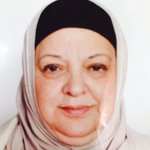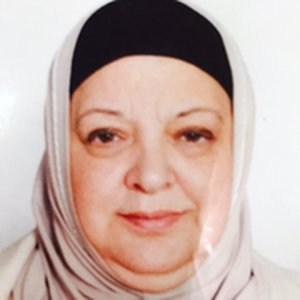Suzan Arafat
- Nature of Work
- Academic
- Profession
- Assistant Professor
- Email Address
- [email protected]
- Office Phone
- (+970) 9 2345113 Ext. 3320


Suzan Arafat
- Nature of Work
- Academic
- Profession
- Assistant Professor
- Email Address
- [email protected]
- Office Phone
- (+970) 9 2345113 Ext. 3320
- Course Title
- Methods of Teaching English 2
- Course Number
- 473514
- Instructor Name
- Suzan Arafat
- Contact Information
- [email protected]
- Semester(s) and academic year(s)
- Second Semester 2020
- Compulsory / Elective
- Compulsory
This is the second course in methods of teaching English , it aims at providing students with sufficient background about different issues related to teaching English as a foreign languages, it also seeks at introducing students to various practices in teaching and learning English as a foreign languages, it provides students with background information related to learning styles, learning strategies, content evaluation and lesson planning.
The course aims at:
1- Developing students abilities to design, organize and evaluate methods and material for teaching English.
2- Gain theoretical framework and models for teaching English grounded on educational research.
3- Acquire essential subject knowledge and familiarity with the principle of effective teaching.
4- acquire a range of practical skills for teaching English.
5- Demonstrate their abilities to apply their learning in a real teaching context.
6- Work in pairs and small groups to develop and practice teaching English.
7- Engage in reflection on their learning.
The course aims at:
1- Developing students abilities to design, organize and evaluate methods and material for teaching English.
2- Gain theoretical framework and models for teaching English grounded on educational research.
3- Acquire essential subject knowledge and familiarity with the principle of effective teaching.
4- acquire a range of practical skills for teaching English.
5- Demonstrate their abilities to apply their learning in a real teaching context.
6- Work in pairs and small groups to develop and practice teaching English.
7- Engage in reflection on their learning.
The course aims at:
1- Developing students abilities to design, organize and evaluate methods and material for teaching English.
2- Gain theoretical framework and models for teaching English grounded on educational research.
3- Acquire essential subject knowledge and familiarity with the principle of effective teaching.
4- acquire a range of practical skills for teaching English.
5- Demonstrate their abilities to apply their learning in a real teaching context.
6- Work in pairs and small groups to develop and practice teaching English.
7- Engage in reflection on their learning.ر
By the end of the course students are expected to:
1- Identify elements of good Research.
2- Analyze critically research papers.
3- identify key measurement in good presentation.
4- Work in groups to evaluate colleges presentations
5- Present individually or in pairs topics according to what they learned about effective presentation.
6- Analyze the strengths and weaknesses in examples of tests written by school teachers.
7- Criticize techniques in teaching various areas and skills in language teaching including pronunciation, vocabulary, grammar, listening, speaking, reading and writing.
8- Model teaching the skills using active learning.
9- Describe good classroom management.
By the end of the course students are expected to:
1- Identify elements of good Research.
2- Analyze critically research papers.
3- identify key measurement in good presentation.
4- Work in groups to evaluate colleges presentations
5- Present individually or in pairs topics according to what they learned about effective presentation.
6- Analyze the strengths and weaknesses in examples of tests written by school teachers.
7- Criticize techniques in teaching various areas and skills in language teaching including pronunciation, vocabulary, grammar, listening, speaking, reading and writing.
8- Model teaching the skills using active learning.
9- Describe good classroom management.
Textbook:
Ur,Penny (2012) A course in Language Teaching: Practice and theory2nd ed. Cambridge: Cambridge University Press.
References:
- Blake, R. (2001). What language professionals need to know about technology. ADFL Bulletin, 32(3), 93-99.
- Celce-Murcia, M. (2001). Language teaching approaches: An overview. In M. Celce-Murcia (Ed.), Teaching
- English as a Second or Foreign Language (pp. 3-11). Boston: Heinle & Heinle.
- Cohen, A. (2001). Second language assessment. In M. Celce-Murcia (Ed.), Teaching English as a Second or
- Foreign Language (pp. 515-534). Boston: Heinle & Heinle.
- DeCarrico, J. S. (2001). Vocabulary learning and teaching. In M. Celce-Murcia (Ed.), Teaching English as a
- Second or Foreign Language (pp. 285-299). Boston: Heinle & Heinle.
- Ediger, A. (2001). Teaching children literacy skills in a second language. In M. Celce-Murcia (Ed.), Teaching
- English as a Second or Foreign Language (pp. 153-169). Boston: Heinle & Heinle.
- Ehrman, M, Leaver, B., & Oxford, R. (2003). A brief overview of individual differences in second language
- learning. System, 31(1), 313-330.
- Goodwin, J. (2001). Teaching pronunciation. In M. Celce-Murcia (Ed.), Teaching English as a Second or
- Foreign Language (pp. 117-137). Boston: Heinle & Heinle.
- Grabe, W., & Stoller, F. (2001). Reading for academic purposes: Guidelines for the ESL/EFL teacher. In M.
- Celce-Murcia (Ed.), Teaching English as a Second or Foreign Language (pp. 187-203). Boston: Heinle &
- Heinle.
- Hawkins, B. (2001). Supporting second language children’s content learning and language development in K-
- 5. In M. Celce-Murcia (Ed.), Teaching English as a Second or Foreign Language (pp. 367-383). Boston:
- Heinle & Heinle.
- Hilles, S., & Sutton, A. (2001). Teaching adults. In M. Celce-Murcia (Ed.), Teaching English as a Second or
- Foreign Language (pp. 385-399). Boston: Heinle & Heinle.
- Hinkel, E. (2001). Building awareness and practical skills to facilitate cross-cultural communication. In M.
- Celce-Murcia (Ed.), Teaching English as a Second or Foreign Language (pp. 443-458). Boston: Heinle &
- Heinle.
- Jensen, L. (2001). Planning lessons. In M. Celce-Murcia (Ed.), Teaching English as a Second or Foreign
- Language (pp. 403-413). Boston: Heinle & Heinle.
- Kroll, B. (2001). Considerations for teaching an ESL/EFL writing course. In M. Celce-Murcia (Ed.), Teaching
- English as a Second or Foreign Language (pp. 219-232). Boston: Heinle & Heinle.
- Lazaraton, A. (2001).Teaching oral skills. In M. Celce-Murcia (Ed.), Teaching English as a Second or Foreign
- Language (pp. 103-115). Boston: Heinle & Heinle.
- Lyster, R., & Ranta, L. (1997). Corrective feedback and learner uptake: Negotiation of form in communicative
- classrooms. SSLA, 19, 37-66.
- McGroarty, M. (2001). Bilingual approaches to language learning. In M. Celce-Murcia (Ed.), Teaching
- English as a Second or Foreign Language (pp. 345-356). Boston: Heinle & Heinle.
- Nunan, D. (2001). Syllabus design. In M. Celce-Murcia (Ed.), Teaching English as a Second or Foreign
- Language (pp. 55-65). Boston: Heinle & Heinle.
- Olshtain, E. (2001). Functional tasks for mastering the mechanics of writing and going just beyond. In M.
- Celce-Murcia (Ed.), Teaching English as a Second or Foreign Language (pp. 207-217). Boston: Heinle &
- Heinle.
- Oxford, R. (2001). Language learning styles and strategies. In M. Celce-Murcia (Ed.), Teaching English as a
- Second or Foreign Language (pp. 359-366). Boston: Heinle & Heinle.
- Peck, S. (2001). Developing children’s listening and speaking in ESL. In M. Celce-Murcia (Ed.), Teaching
- English as a Second or Foreign Language (pp. 139-149). Boston: Heinle & Heinle.
- Peregoy, S., & Boyle, O. (2005). What kinds of programs exist to meet the needs of English language learners?
- In S. Peregoy & O. Boyle (Eds.), Reading, Writing, and Learning in ESL: A Resource Book for K-12
- Teachers (pp. 23-28). Boston: Pearson/Allyn and Bacon.
- Peterson, P. W. (2001). Skills and strategies for proficient listening. In M. Celce-Murcia (Ed.), Teaching
- English as a Second or Foreign Language (pp. 87-100). Boston: Heinle & Heinle.
- Savignon, S. J. (2001). Communicative language teaching for the twenty-first century. In M. Celce-Murcia
(Ed.), Teaching 19
| Activity | Percent (%) |
|---|---|
| FIRST TEST | 20% |
| SEMINAR | 20% |
| PATICIPATION | 10% |
| PRACTICAL AND WRITTEN EXAM | 50% |